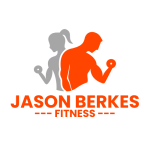Introduction
After an injury or illness, the road to recovery can be daunting. Physical and emotional challenges may seem insurmountable, but with the right mindset, strategies and support, you can overcome adversity, regain strength and emerge more resilient than ever. This article explores the importance of recovery and rehabilitation, discusses key principles and provides practical guidance for a successful journey.
Understanding the Recovery Process
Recovery encompasses physical, emotional and mental rejuvenation. A well-structured rehabilitation program addresses:
- Physical restoration: Healing and regaining physical function.
- Emotional well-being: Managing stress, anxiety and depression.
- Mental resilience: Building coping strategies and confidence.
Key Principles of Effective Rehabilitation
- Professional guidance: Collaborate with healthcare professionals, physical therapists and coaches.
- Personalized approach: Tailor rehabilitation plans to individual needs.
- Gradual progression: Incremental increases in intensity and difficulty.
- Holistic care: Address physical, emotional and mental aspects.
- Support network: Surround yourself with encouraging family, friends and peers.
Stages of Rehabilitation
- Acute phase (0-72 hours): Focus on pain management, inflammation reduction and stabilization.
- Subacute phase (72 hours-6 weeks): Progress to strengthening, mobility and flexibility exercises.
- Post-acute phase (6 weeks+): Emphasize functional training, conditioning and return to activity.
Rehabilitation Strategies
I. Physical Restoration
- Pain management: Utilize medication, ice, compression and elevation.
- Manual therapy: Massage, acupuncture and physical therapy.
- Exercise programming: Strengthening, stretching and cardiovascular exercises.
- Mobility aids: Crutches, walkers or wheelchairs.
II. Emotional Well-being
- Mindfulness practices: Meditation, deep breathing and yoga.
- Cognitive-behavioral therapy: Address negative thought patterns.
- Support groups: Connect with others experiencing similar challenges.
- Journaling: Record progress, emotions and insights.
III. Mental Resilience
- Goal setting: Establish realistic milestones.
- Positive self-talk: Encourage self-compassion.
- Visualization techniques: Imagine successful outcomes.
- Celebrating milestones: Acknowledge progress.
Additional Tips for a Successful Recovery
- Stay hydrated: Adequate fluid intake.
- Balanced nutrition: Fuel your body with whole foods.
- Sufficient sleep: Prioritize restful nights.
- Leisure activities: Engage in enjoyable hobbies.
- Seek professional help: When facing mental health concerns.
Real-Life Examples of Successful Rehabilitation
- Athletes: Overcoming injuries to return to competition.
- Individuals with chronic conditions: Managing symptoms, adapting to new realities.
- Post-surgery recovery: Gradually regaining strength.
Conclusion
Recovery and rehabilitation require patience, persistence and resilience. Embrace the journey, celebrate small victories and remember that setbacks are temporary. With the right approach, support and mindset, you’ll emerge stronger, more determined and ready to tackle new challenges.



